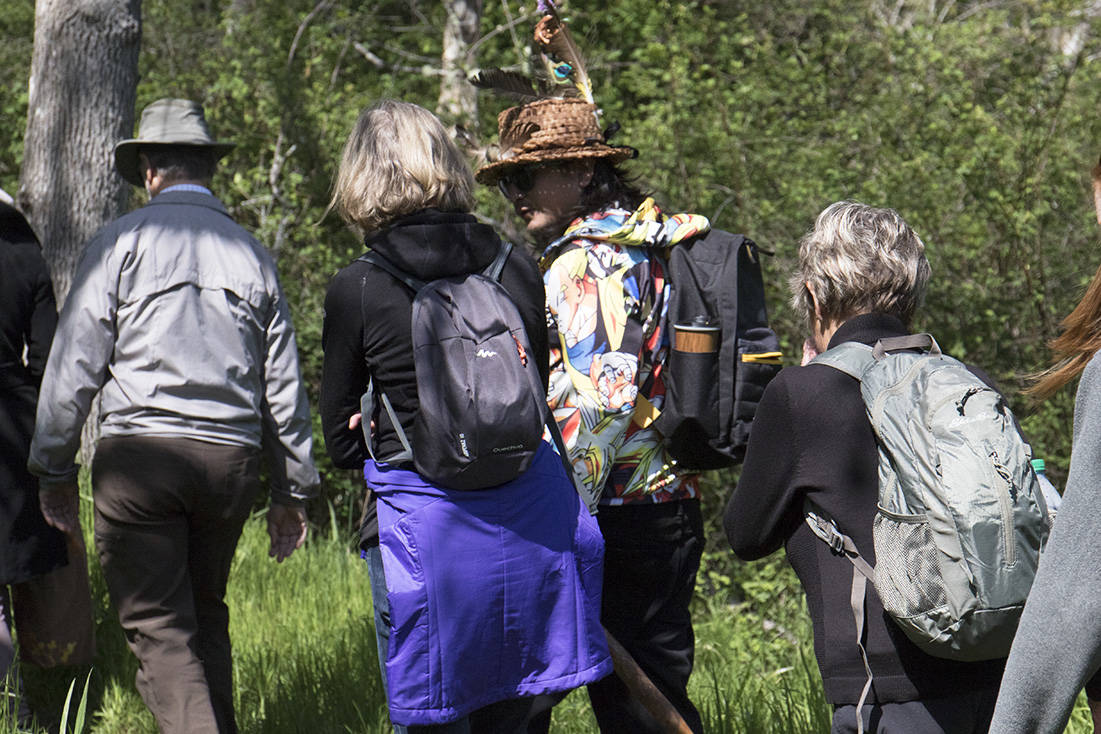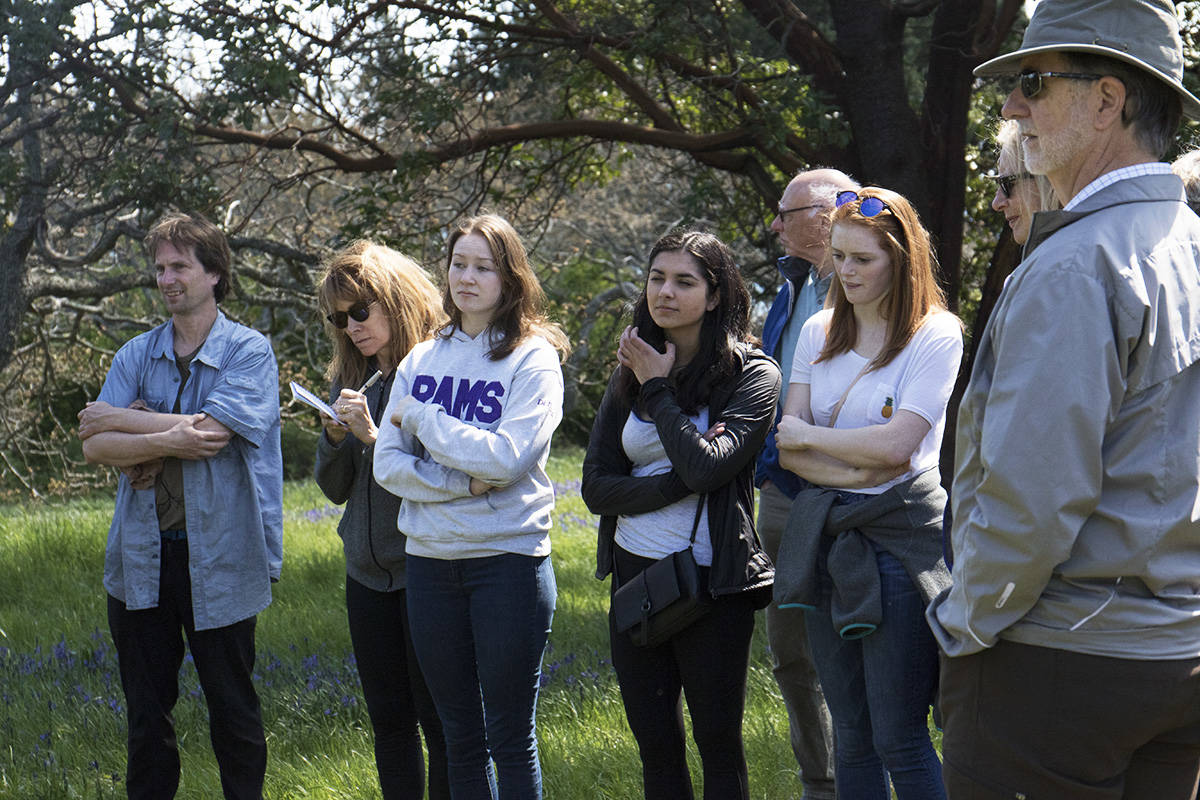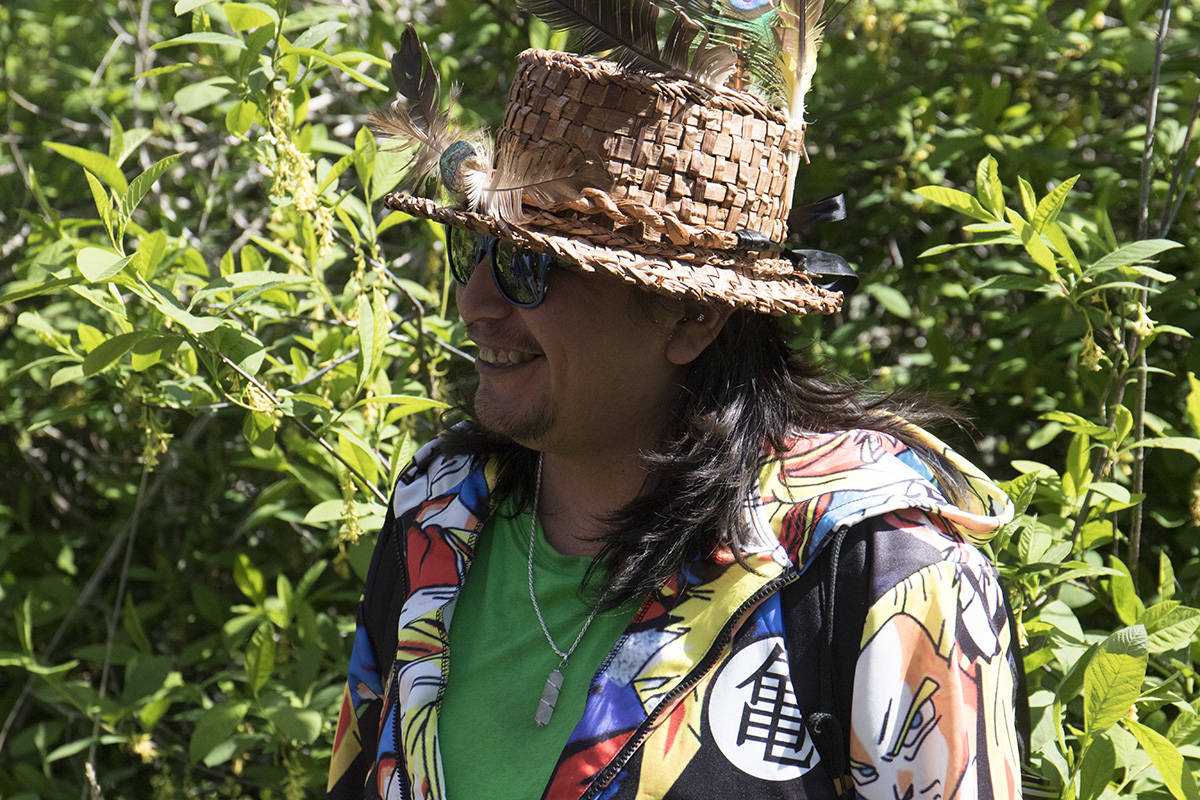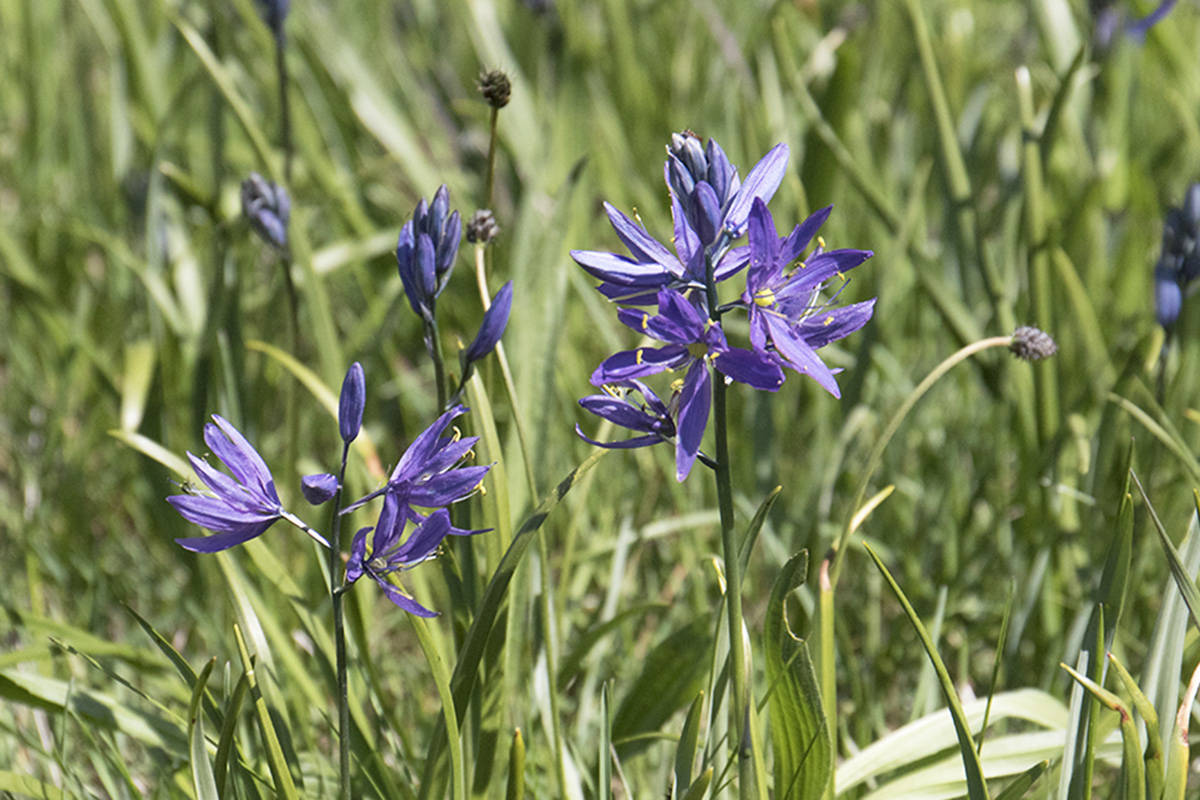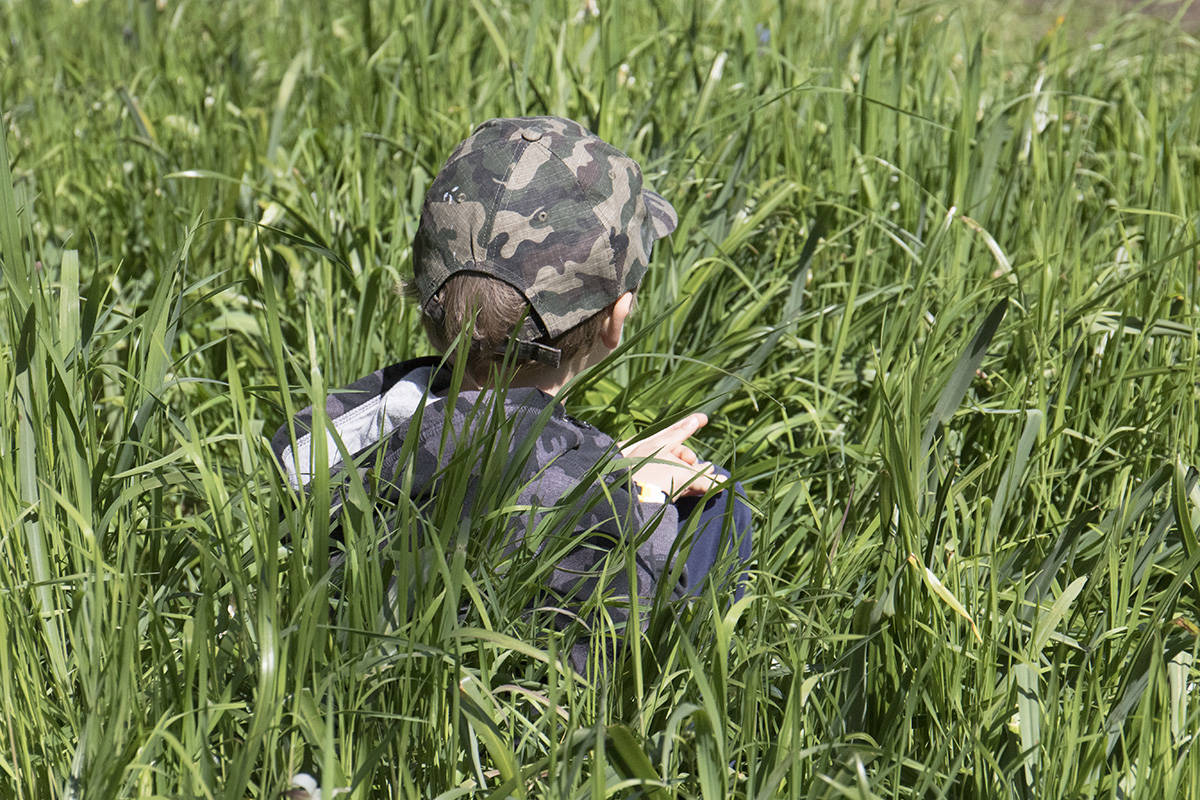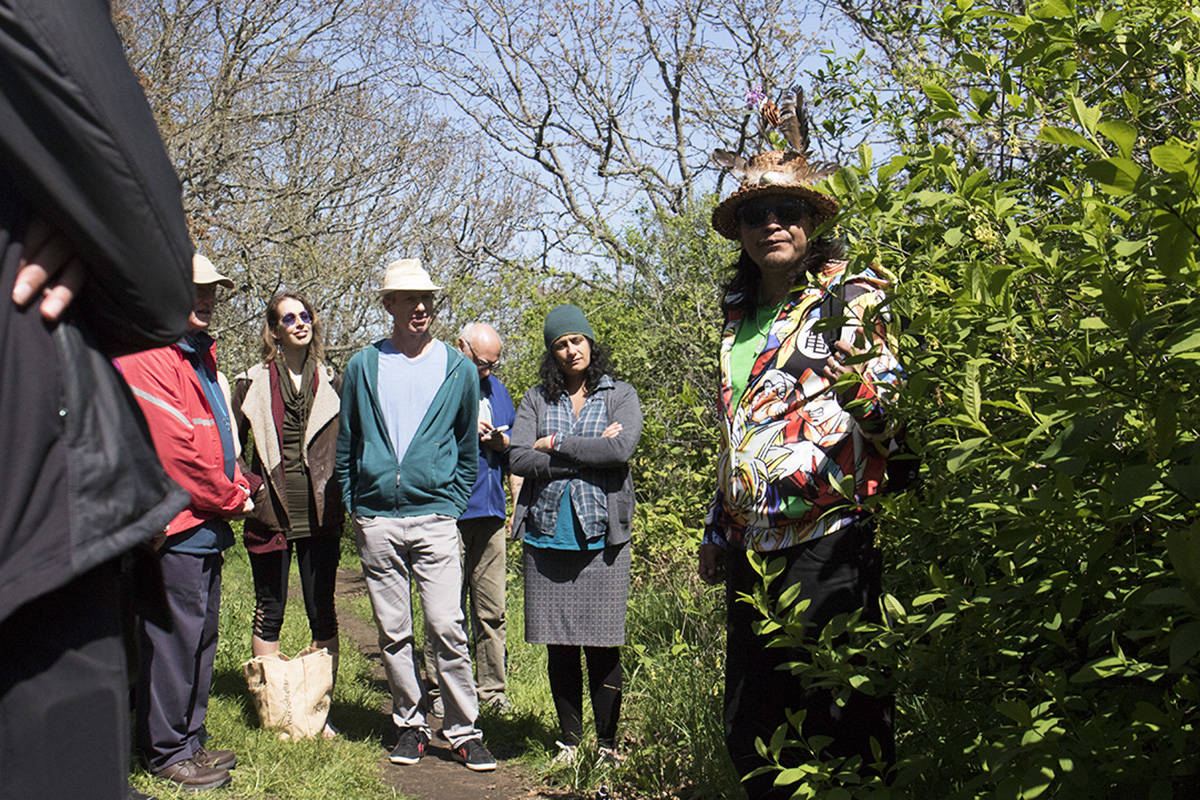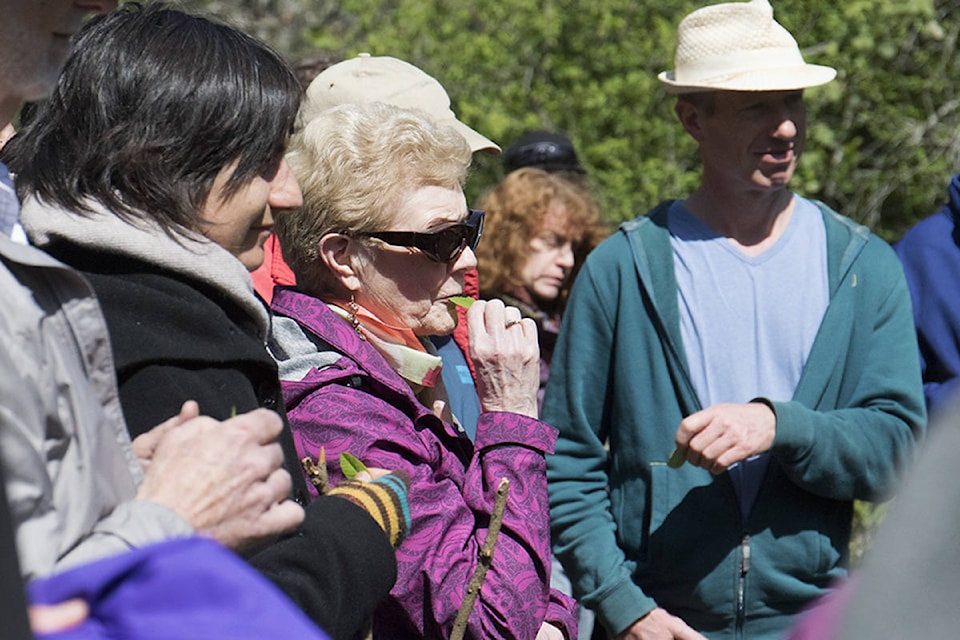The sun was shining, the weather was warm and there was no better way to celebrate Earth Day than spending the afternoon learning about the histories of some of its native plants.
The Victoria Natural History Society and the Friends of Beacon Hill Park held a day of guided nature walks focused on the Garry oak ecosystem, on the 27th anniversary of Camas Day.
John-Bradley Williams, an ethnobotanist from the Tsawout Nation spoke to participants about the Camas plant, as he led a walk through fields where the lavender-coloured flower has grown natively for centuries.
Celebrating #EarthDay18 learning about traditional #Indigenous uses of plants native to Beacon Hill Park with John-Bradley Williams, a First Nations ethnobotanist #YYJ #Camas pic.twitter.com/R7GvpifbYJ
— Kristyn Anthony (@kristyn_anthony) April 22, 2018
Camas is so rampant on the South Island, Williams said the scale at which it was propagated and harvested was prolific. Indigenous people would plant the toxic strain of the plant along the edges of the water to deter enemies from approaching the land.
“When our visitors got into our territories they would look out at meadows of these and think they were looking at lakes,” Williams told a a few dozen people of all ages on his tour.
RELATED: Celebrate Earth Day with guided walks through Beacon Hill Park
Some experts can tell the difference between the edible and the death Camas by feeling the leaves, he added, saying death by Camas is a slow and painful one.
“That’s definitely one that’s reserved for your enemy,” he said jokingly.
Learning about the traditional #Indigenous uses of what we now call Camas on a guided nature walk in Beacon Hill Park to celebrate #EarthDay18 🌱🌎 pic.twitter.com/o19Ux6VLWj
— Victoria News (@VictoriaNews) April 22, 2018
Williams also shared his knowledge around the plant Symphoricarpos, commonly known as snow berries.
“We can get three different medicines from this plant,” he explained, adding the plant aids in everything treating everything from eczema to swimmer’s itch to helping stroke sufferes regain the use of their muscles.
“You just take the berries themselves and apply to the afflicted area,” Williams said. “It absorbs a lot faster than any pharmaceutical medicine and helps heal a lot faster than pharmaceutical medicines.”
The group toured its way along other plants, tasting the leaves of the Indian Plum, some taking notes and asking questions.
For more information on what the Friends of Beacon Hill Park are up to, visit them online at friendsofbeaconhillpark.ca
